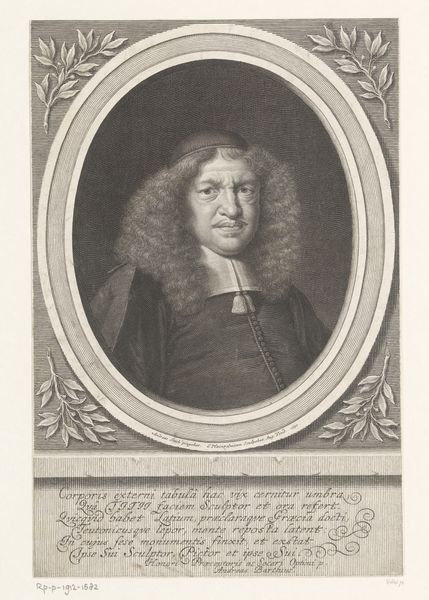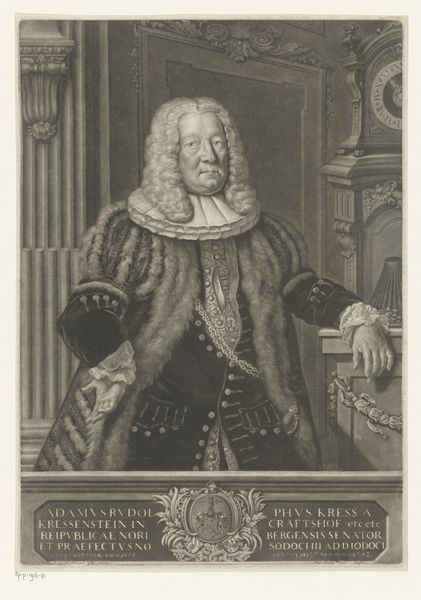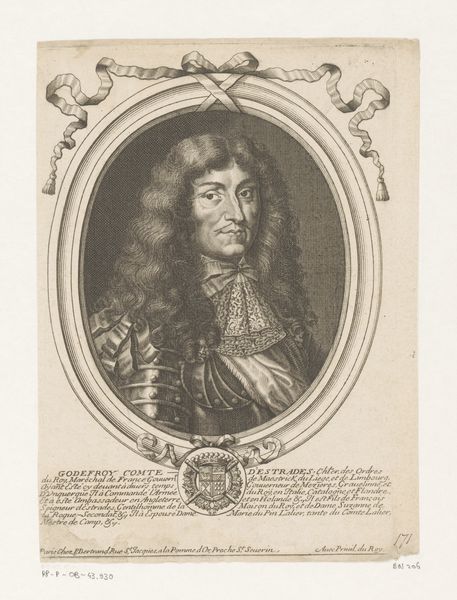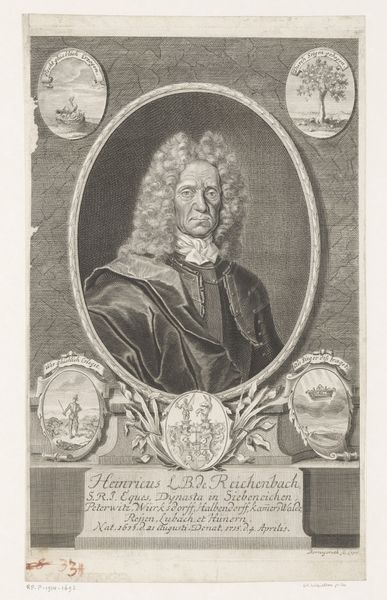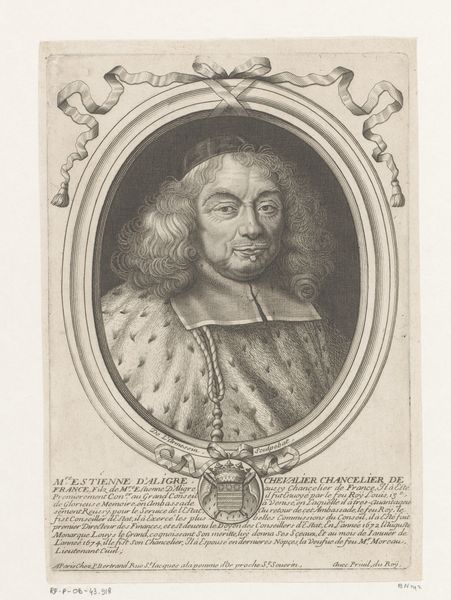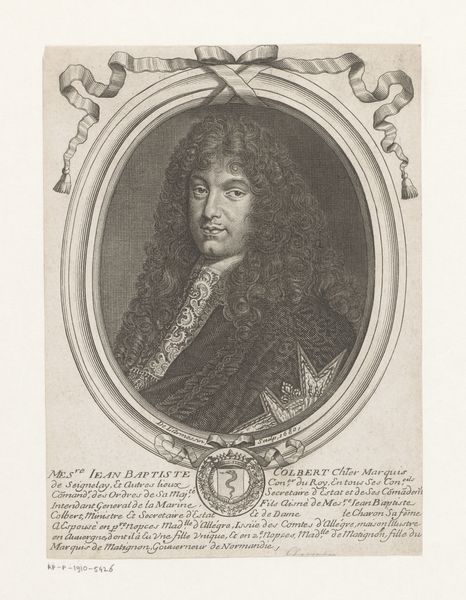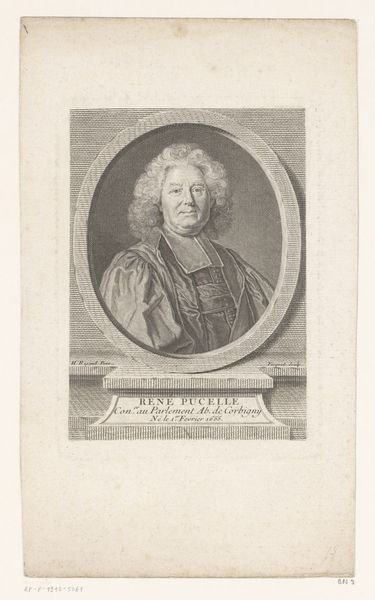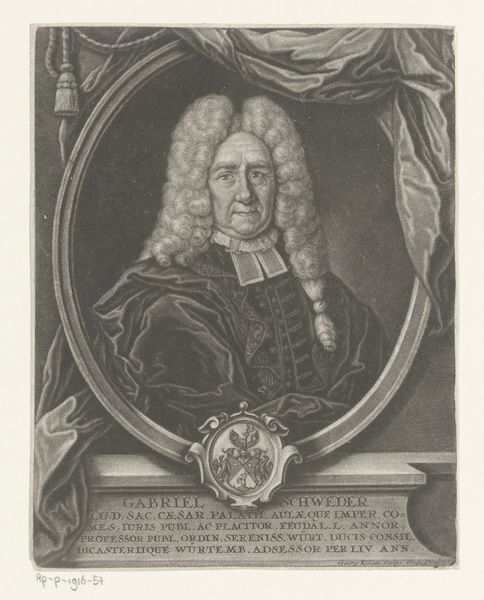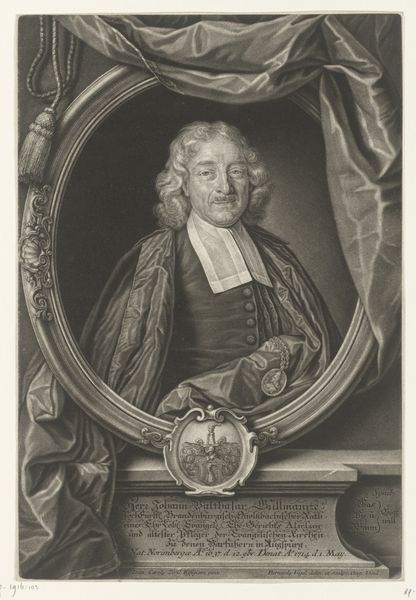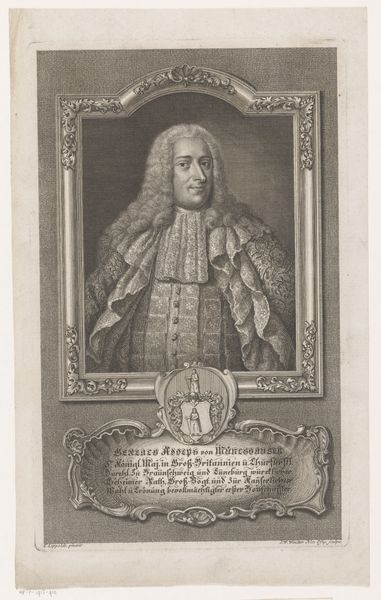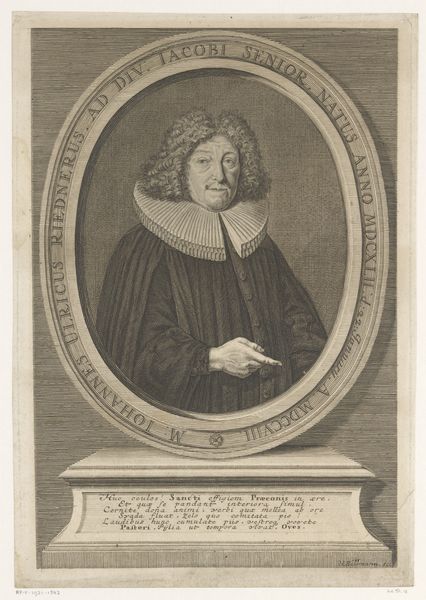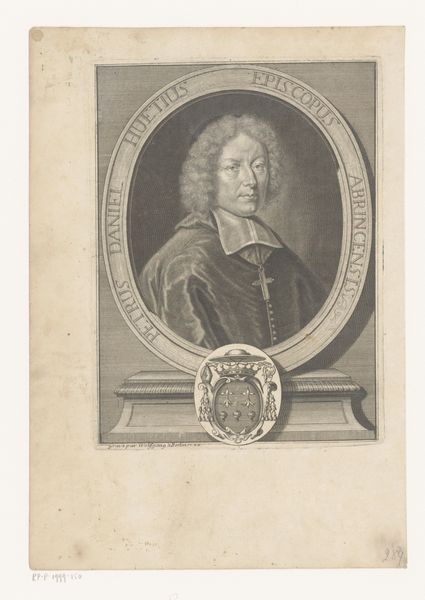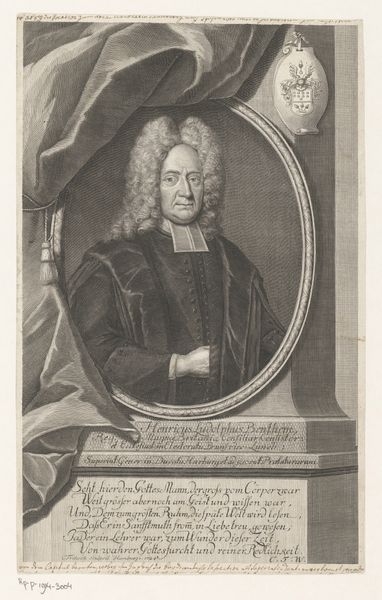
print, engraving
#
portrait
#
aged paper
#
baroque
# print
#
old engraving style
#
figuration
#
line
#
history-painting
#
academic-art
#
engraving
#
historical font
Dimensions: height 225 mm, width 160 mm
Copyright: Rijks Museum: Open Domain
Curator: Here we have Nicolas de Larmessin’s portrait of René Potier de Tresmes, made sometime between 1642 and 1678. It's an engraving, currently held at the Rijksmuseum. What are your initial thoughts? Editor: My first impression is that it’s quite formal. The sitter seems constrained by both his armor and the highly ornamented frame. Almost imprisoned by status. Curator: Indeed. Notice how Larmessin uses the precise lines of the engraving to delineate form, creating a study in textures. The polished metal of the armor sharply contrasts with the delicate lace collar. There's also a real attention paid to rendering his face, the lines giving it character and depth. Editor: The armor immediately struck me as symbolic, reflecting René Potier de Tresmes' high status. It presents him as a defender of the realm, despite his, shall we say, slightly weary expression. That coat of arms below adds to the sense of lineage, the emblems practically screaming "legacy." Curator: Quite. And from a purely compositional standpoint, the oval frame functions as a visual anchor, drawing your eye inward, back into his somewhat world-weary expression. This generates a pleasing structural closure, as well. Editor: Yet there’s something of a contrast with the ribbons affixed to the frame. Those speak of celebratory events, pageantry... They evoke something slightly softer, almost mocking the militaristic garb and stern expression. Could they reference personal achievements or perhaps familial ties? Curator: One could certainly argue for that. Larmessin uses established tropes of portraiture to signify prestige and authority, while undercutting them with smaller, idiosyncratic details such as the rather rumpled ribbon, giving the work depth and visual intrigue. Editor: Well, it appears we’ve both found something compelling in this engraving, whether through analyzing its intrinsic qualities or interpreting its cultural signifiers. Curator: Exactly. It is, as they say, in the sum of its parts.
Comments
No comments
Be the first to comment and join the conversation on the ultimate creative platform.
